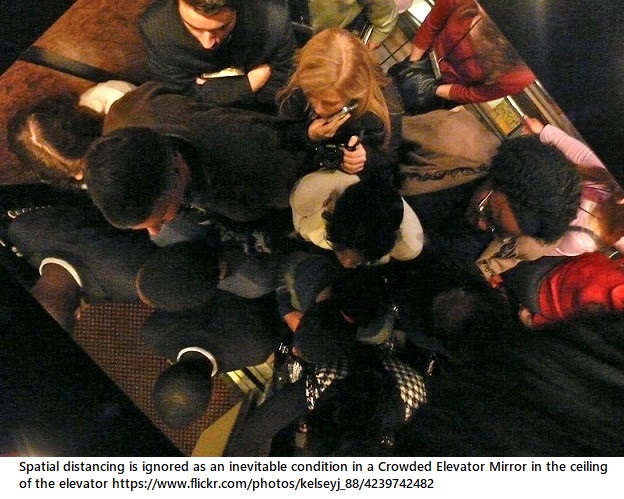Post -by Gautam Shah
.
.
Opening systems on the street or entrance foyer are the prime
places for personalization. These are straightforward or direct
declarations, as much as they are subtle identifications.
The Direct Expressions highlight the building number, street
name, postal distribution code, and name of the owner. They
also show timings and conditions of visitations. Identifiers like,
the status of the owner, the nature and antiquity of the
ownership, occupiers’ name, caste, educational qualifications, honors, nationality, titles, are marked over the door.
The identifying elements are in linguistic expressions like
Quotes and couplets. These are often in ancient languages, or
in forms which are incomprehensible to themselves or others,
but placed as traditions demand it. Names and indicators of
Gods and saints not only reflect the religious affinity, but also
the faith in specific groups. Display of forms, patterns, signs
and symbols reveal the owner’s affiliation with secret
communities.
The declarative elements announce the nature of opening like,
entry, exit, restricted access. These elements are placed on the
outer face of an entrance to warn new visitors. And the same
are occasionally placed on the interior side to reinforce the
message to a departing visitor (e.g. close the door gently or
fully, visit again).
The Indirect Expressions are little more abstract or implied.
These somehow suggest the ethnicity, social standing, religion
or faith. These also show the nature of building use like place of
residence, worship, or commerce, etc. Often the abstracted
forms are placed as continuation of traditions without being
aware of the purpose or significance.
The street side openings are the chief locations where the
declarative elements are placed. But these can also occur at
entry points of sub spaces such as kitchen, prayer room, bed
room, toilet, etc.
The identification and declarative elements are very essential
enrichment and for personalization of the building and its sub
sections. Some declarations result from attempts to personalize
a building. Immigrants try to enrich their homes with a lifestyle
they have inherited. These lifestyle enrichments are like the
colours, fabrics, furniture, landscaping, sculptures and other
decorative feature. Similarly the peculiar odours of foods and
sounds generating from their buildings declare the owner’s
identity.
Identification elements differentiate a building within a group,
or associate the building to a category such as class or colony.
In a mass housing colony, people treat their doors, windows, or
curtains, extravagantly different from their neighbours. Opposite
to this, identical doors and windows conjoin several, even
differently styled buildings into a cohesive entity, a colony.
The entrance door (or a street window) is not just the place of
arrival but is a metaphoric point of entrance for everything, good
or evil, friend or enemy, known or unknown. A visitor, and
everything else, is expected to arrive at the main door, in spite
of many other convenient points. In some way it is a point of
fear, doubt and danger and hope, fulfillment and safety. Means
of physical and spiritual defense are placed here, even though
there may be other vulnerable locations in a building.
Door signage and graffiti are placed by owners and by street
users. This may be for revenge, for the political or hate
messaging or as a billboard. The door or surround area
declarations are for publicity, information or as extremely
personal statement.
The visitor’s announcement and identification systems are
placed near the formal entrance, This entrance-based entities
include: bells, knockers, buzzers, talking pipes, whistles, sirens,
rattlers, vibrators, horns, intercoms, video recognition,
surveillance systems.
A door or front side opening like windows, balconies are the
focal point of a building, so anything that is or placed here is
considered as delivered to the owner or occupier of the space.
In case of a religious building it is an offering to God. At
pragmatic level the messages of welcome, farewell,
congratulations, facilitations, list of honours, notices, results,
declarations, legal attachments, seals, custodial notices, etc. are
placed over the door. Indicative objects or symbols are placed
to identify faith, religion or profession, etc. but also as
protecting and beneficiary signs. Chimes or sound creating
hanging devices, hanging mobiles over the openings are
believed to bring in good luck.
There are many objects whose presence or absence over an
entrance signifies certain conditions of the family. Absence of
a Rangoli pattern (a colourful pattern drawn in the morning in
front of the house) or a floral Toran means there is a
mourning period for the family. Hindu household hangs the
urn containing the ashes post cremation of the dead, outside
and beside the door. The urn remains there till appropriate
ceremonies are conducted and ashes are disposed off. The
presence of an urn outside the door is a message to others
that invitations for all joyous events may not be accepted by the
house-owner. The presence of a swastika or other markings
in vermilion colour over the door threshold indicates it is
flourishing family and not a lonely widow’s residence. Bride and
groom leave their palm prints over the door the marriage
ceremonies. Similarly foot prints of a newly married bride and
a pregnant lady in front and inside the entrance door are
considered auspicious.
.


.jpg)




























